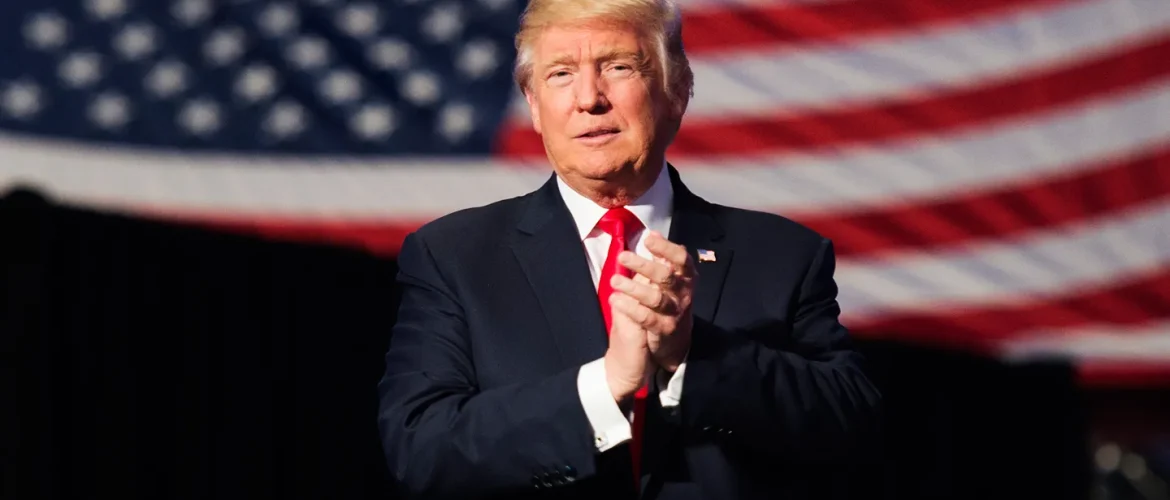Articles
مركز شاف لتحليل الأزمات والدراسات المستقبلية > Reports > International Affairs Unit > Trump’s Reciprocal Tariffs: A New Era of American Trade Wars
Trump’s Reciprocal Tariffs: A New Era of American Trade Wars
- April 9, 2025
- Posted by: Maram Akram
- Category: International Affairs Unit Reports
No Comments

By: Laila Ahmed
(Research Assistant at the International Affairs Unit)
Introduction:
In a significant escalation of his trade war, President Donald Trump announced sweeping new tariffs on April 2, calling the historic action a “declaration of economic independence.” Trump’s bold attempt to combat unfair trade practices may result in higher pricing for American consumers and slower economic expansion.
Using national emergency powers, Trump declared 10% reciprocal tariffs on all imports into the US and much higher duties on items from roughly 60 nations or trading blocs that have a large trade deficit with the US. This includes increased taxes of 34% and 20% imposed on China and the European Union, respectively.
Trump’s most recent actions represent the most significant escalation in US tariffs in nearly a century since the Smoot-Hawley Act of 1930. However, the trade battle doesn’t stop there.
What are tariffs and how do they work?
Taxes imposed on commodities purchased from other nations are known as tariffs. Technically, they are calculated as a percentage of the product’s value. Businesses that import items into the country are required to pay taxes to the government.[1]
Tariffs are nothing new. For centuries, nations have used them to generate income to support their governments and shield their national industries against foreign competition.
However, with the establishment of the World Trade Organization and initiatives by Western countries to liberalize trade, that started to alter in the late 1990s.
Trump, however, is now attempting to go back in time. He proposed tariffs that are higher and more widespread than those imposed by any other president throughout modern American history even more extensive than the 1930 Smoot-Hawley tariffs, which historians claim exacerbated the Great Depression.[2]
For decades, Trump has argued that the US should use tariffs to boost its economy. Trump has maintained that the US should impose tariffs to strengthen its economy for decades.
According to him, they will boost tax revenue, encourage US consumers to purchase more American-made goods, and attract significant investment to the US. Trump wants the value of the things the US sells to other nations to be less than the value of the goods it purchases from them. He contends that foreigners have pillaged America and that cheaters have exploited it.[3]
The announcement of the Reciprocal Tariffs
On April 2, US President Donald Trump declared extensive tariffs on imports. Key cabinet officials and union representatives from the steel and auto industries attended the “Make America Wealthy Again” event where he unveiled them. Trump President laid out the U.S. reciprocal tariff rates that more than 180 countries and territories, including European Union members, will face under his sweeping new trade policy. The higher tariffs on countries Trump referred to as the “worst offenders” were characterised as “reciprocal” by White House officials. They were pitched as “reciprocal,” as they aims to match the tariffs that other nations impose on the US.[4]
Here are the new US Tariffs:
A base rate of 10% on all imports, which applies to almost all products coming into the US. The nations with which the US maintains a trade surplus are likewise subject to this rate.
Higher “reciprocal” taxes on commodities coming from nations and areas that have trade deficits or anti-competitive policies deemed by the US.
the revocation of the de minimis rule, which permits duty-free entry into the US for shipments under $800 from Hong Kong and China
25% tax on certain motor parts, vehicles, and trucks.
